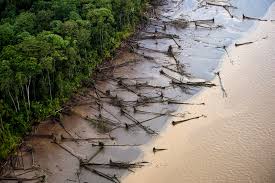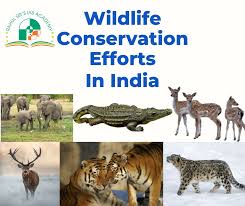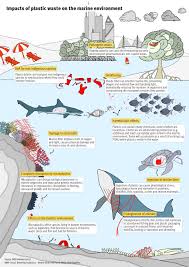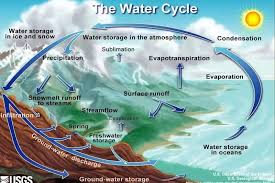Forests are often called the “lungs of the Earth.” They produce oxygen, absorb carbon dioxide, and provide homes for millions of species. However, deforestation — the large-scale removal of forests — is rapidly changing the face of our planet. In this article, we will explore what deforestation is, why it happens, and how it affects the environment in multiple ways. Understanding this issue is critical for students, policymakers, and global citizens who wish to protect our planet for future generations.
What is Deforestation?
Deforestation is the clearing, destroying, or thinning of forests by humans. It usually happens to make space for agriculture, mining, urban development, or infrastructure projects. Sometimes, forests are cut down for timber and wood products. While forests have been cut down throughout human history, the scale and speed of deforestation today are unprecedented.
According to the World Bank, around 10 million hectares of forest — an area roughly the size of Iceland — are lost each year. This alarming rate threatens not only trees but the complex web of life that depends on forests for survival.
Causes of Deforestation
Understanding the causes of deforestation helps us better grasp its solutions. Major causes include:
1. Agriculture
The largest driver of deforestation is agricultural expansion. Farmers cut down forests to grow crops like soybeans, palm oil, and corn or to create grazing lands for livestock.
2. Logging
Trees are valuable resources. They are cut down for timber, paper, and fuel. Sometimes logging is done legally with permits, but illegal logging operations also contribute heavily to forest loss.
3. Urbanization
As populations grow, more land is needed for housing, roads, and industry. Urban sprawl often leads to deforestation, especially near large cities.
4. Mining
Extracting minerals and resources from the ground often requires clearing large areas of forest, especially in countries rich in resources like gold, oil, and diamonds.
5. Climate Change
While climate change is a consequence of deforestation, it can also cause forests to become more vulnerable. Rising temperatures and changing rainfall patterns can weaken forests, making them more susceptible to disease, pests, and fires.
Environmental Impact of Deforestation
Deforestation does not just remove trees; it sets off a chain reaction of environmental problems that can affect the entire planet. Here are some of the major impacts:
1. Loss of Biodiversity
Forests are home to about 80% of the Earth’s terrestrial species. When forests are cleared, countless species lose their habitats. Many animals, insects, plants, and microorganisms cannot survive without their natural environment.
According to the International Union for Conservation of Nature (IUCN), deforestation is a major cause of species extinction. The disappearance of one species can disrupt entire ecosystems, creating a ripple effect across the food chain.
2. Climate Change Acceleration
Forests play a critical role in regulating the Earth’s climate. They absorb carbon dioxide (CO₂), a greenhouse gas that contributes to global warming. When trees are cut down, not only is less CO₂ absorbed, but the carbon stored in trees is released back into the atmosphere.
It’s estimated that deforestation is responsible for about 10% of global greenhouse gas emissions — nearly the same as all the world’s cars and trucks combined!
3. Disruption of Water Cycles
Trees absorb and release water through a process called transpiration. This helps regulate local and global water cycles. When forests are destroyed, rainfall patterns can change. Areas can experience droughts or floods more frequently.
In the Amazon rainforest, deforestation has already reduced rainfall, which in turn affects farming, wildlife, and water supplies even far from the forest itself.
4. Soil Erosion
Tree roots help hold soil in place. Without them, soil becomes loose and is easily washed away by rain. This leads to landslides, reduced soil fertility, and the pollution of rivers and lakes with sediment.
Poor soil quality affects agriculture and can trigger food shortages in regions that depend on farming.
5. Impact on Indigenous Communities
Many indigenous peoples live in forests and depend on them for their livelihoods, culture, and identity. Deforestation displaces these communities, often violating their rights and forcing them into poverty.
Their traditional knowledge about sustainable living is also lost, which could otherwise benefit global conservation efforts.
Case Studies: Real-World Examples
Looking at real-world examples helps us understand the depth of deforestation’s impact:
1. The Amazon Rainforest
Often called the “lungs of the planet,” the Amazon has seen massive deforestation due to cattle ranching, logging, and agriculture. Between 1970 and 2020, nearly 20% of the Amazon was destroyed. This has led to reduced biodiversity, changes in weather patterns across South America, and increased carbon emissions.
2. Indonesia
Indonesia’s forests have been heavily cleared for palm oil plantations. This has endangered species like the orangutan, Sumatran tiger, and rhinoceros. Moreover, the use of fire to clear land often causes haze and air pollution across Southeast Asia.
3. The Congo Basin
The Congo Basin is the second-largest rainforest after the Amazon. Deforestation here threatens the livelihoods of millions and increases vulnerability to climate change, as the region plays a key role in carbon storage.
Solutions to Deforestation
The situation is urgent, but it’s not hopeless. Governments, businesses, and individuals all have roles to play in stopping deforestation. Some solutions include:
1. Reforestation and Afforestation
Planting new trees (reforestation) or planting trees in areas that were not previously forested (afforestation) can help restore ecosystems and absorb carbon from the atmosphere.
2. Sustainable Agriculture
Promoting farming techniques that do not require clearing forests — such as agroforestry and permaculture — can help reduce agricultural pressures on forests.
3. Protecting Indigenous Rights
Giving indigenous communities legal rights to their land has proven to be one of the most effective ways to conserve forests. These communities often manage their resources sustainably.
4. Enforcing Anti-Logging Laws
Stricter monitoring and tougher penalties for illegal logging can help curb forest destruction. Technology like satellite monitoring is already being used to track forest changes in real-time.
5. Consumer Awareness
Consumers can make a difference by buying products certified as sustainable, such as FSC-certified wood and RSPO-certified palm oil. Reducing meat consumption can also lower the demand for pastureland.
6. Corporate Responsibility
Companies that rely on forest products must commit to zero-deforestation policies. Some companies are investing in sustainable supply chains to reduce their impact.
7. Education and Advocacy
Spreading awareness about the importance of forests and the dangers of deforestation can lead to grassroots movements that demand action from governments and businesses.
The Future of Forests
Scientists warn that if deforestation continues at the current pace, the world’s forests could collapse within decades. This would have devastating effects on biodiversity, climate stability, and human well-being.
However, positive signs are emerging. Many countries are making efforts to replant forests and improve their management practices. International agreements like the 2015 Paris Climate Agreement also recognize the vital role forests play in combating climate change.
Young activists, indigenous leaders, and conservationists around the world are fighting tirelessly to save forests. Their work reminds us that while the challenges are great, the opportunities for positive change are even greater.
Conclusion
Deforestation is one of the most pressing environmental challenges of our time. It impacts biodiversity, climate, water cycles, soil health, and human communities. But by understanding its causes and consequences, and by taking collective action, we can work toward a future where forests are protected and restored.
Every tree matters. Every forest matters. And every action — no matter how small — can contribute to a greener, healthier planet.




